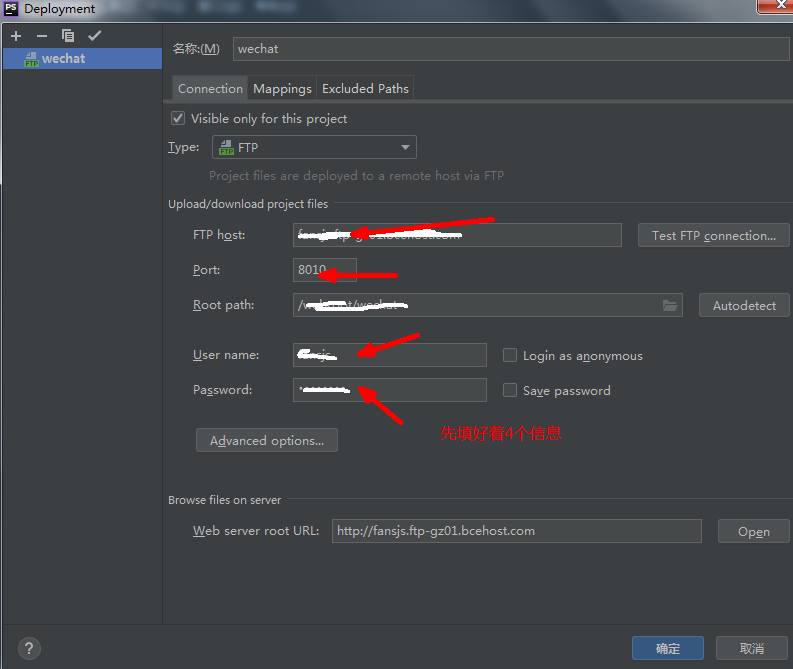

This can be done using a Continuous Integration (CI) server, TeamCity for example, which fetches the latest commit, runs PHPUnit and deploys it to the target machine. The instructions below refer to PhpStorm, but the steps for WebStorm are the same. It is important for teams to do the deployment using a standardized flow, preferably automated. If every developer uploads only their last commit to the remote host, chances are some files deployed will not be the latest ones and several commits will never make it to the server. In a team, not every developer is always working on the latest version of the VCS repository. After doing an initial synchronization between the current project and the remote server, every commit will be sent to the remote host (as long as it’s committed through PhpStorm). Before connecting Name - specify an arbitrary name for the created configuration for connecting to a remote server. All preceding commits will be ignored by this process.įor a single developer, this workflow is ideal. The automatic upload process for a commit only transfers the current changeset’s files to the remote host.

There is also a checkbox available which will automatically perform the upload after every commit. The Commit Changes dialog provides us with the option to upload files to a remote server after a successful commit.
PHPSTORM FTP HOW TO
Let’s return to the initial question: how to deploy to this server when committing files to a VCS? Once a VCS system, whether Git, Mercurial, Subversion or another is registered for our project, we can make a change to our code and press Ctrl+K ( Cmd+K on Mac OS X) to commit changes. We can Drag & Drop files between the current project and the server and make use of synchronization. Once finished, Tools | Deployment | Browse Remote Host will reveal the remote file browser. For example, we can map the local project root to a different content folder on the server. On the Mappings tab, we can also specify how the local and remote folder structure compare to each other. In this blog post we’ll use a remote server as a host which is accessed through FTP. This can be an FTP, FTPS or SFTP server as well as a local or remote folder. To add a remote host, select Tools | Deployment | Configuration and provide the necessary details to connect to the remote host. Working with a Remote Host is a broad topic of its own. This functionality is available in IntelliJ Idea, P圜harm, WebStorm, PhpStorm, and RubyMine.
PHPSTORM FTP DOWNLOAD
If no relevant server is available in the list, click, and in the Deployment dialog that opens configure access to the required server.įrom the Remote Host tool window, you can right-click files and directories to create, move, rename, and delete files and folders on the server, as well as upload and download the desired items.Recently, we received the following question through Twitter: “What is the easiest way to deploy the changes of your last commit(s) to a remote project?” The tool window shows a tree view of files and folders under the server root. Select the required deployment server from the list.
PHPSTORM FTP WINDOWS
Open the Remote Host tool window by choosing Tools | Deployment | Browse Remote Host or View | Tool Windows | Remote Host from the main menu. PhpStorm uses server configurations to control access to servers (FTP, FTPS, SFTP, WebDAV, or Local or Mounted Folder). In either case, to keep your local and remote sources synchronized, configure automatic upload using the Upload changed files automatically to the default server list in the Options dialog.

PHPSTORM FTP FULL
For details, see Configure synchronization with a Web server.Īlthough PhpStorm supports direct editing of individual non-project files on servers, to get full coding assistance either download the sources from the server and arrange them in a PhpStorm project or upload the local sources to the server. You can also compare files and folders on the server with their local versions.įor the sake of simplicity, any file or folder in your PhpStorm project is called local and any file or folder on the server is called remote, even if the server is actually installed on your machine. Filter by these if you want a narrower list of alternatives or looking for a specific functionality of PhpStorm. PhpStorm alternatives are mainly Code Editors but may also be Text Editors or IDEs. Once you have set up synchronization between your local application sources and the application sources on a server, you can create new folders, move, rename, and delete existing files and folders. Other interesting open source alternatives to PhpStorm are VSCodium, Eclipse, Bluefish Editor and Aptana Studio.


 0 kommentar(er)
0 kommentar(er)
